The Silent Heroes of London: How Trees Are Quieting the Urban Roar
Imagine walking down a bustling London street. Cars passing, people chattering, and the distant wail of sirens create a cacophony of urban noise. Now, turn the corner into a tree-lined avenue. The soundscape changes dramatically. The ambient noise softens, replaced by the rustling of leaves and the chirping of birds. It’s as if you’ve stepped into a sanctuary of acoustic comfort within the heart of the city.
What you’ve just experienced is not mere coincidence; it’s the transformative power of trees. While we often praise trees for their contributions to air pollution reduction and biodiversity, their role in noise reduction is frequently overshadowed.
Below, we’ll examine into the science of how trees mitigate noise and explore data-driven insights across London boroughs. From tree density to species distribution, we’ll uncover which boroughs are making the most of their green assets for a quieter environment. Along the way, we’ll address noise pollution policy, and the importance of urban forestry, and pose some thought-provoking questions about public health and urban planning.
Stay with us as we navigate through this fascinating intersection of dendrology, acoustic mapping, and community noise to reveal the silent heroes of London.
The Noise Problem in Urban London
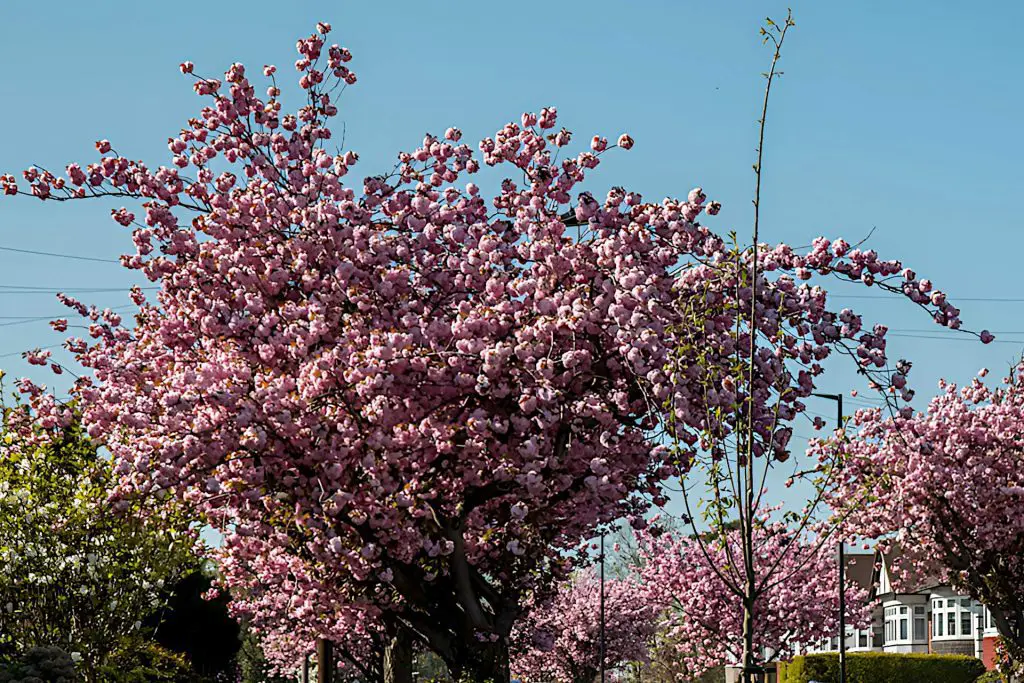
The Issue: Prevalence and Impact of Noise Pollution
London, a bustling metropolis, is no stranger to noise pollution. From the incessant honking of cars to the rumble of the Underground, urban noise is a constant companion for the city’s residents. This isn’t just an annoyance; it’s a public health issue. Studies have shown that prolonged exposure to high levels of noise can lead to stress, sleep disturbances, and even cardiovascular issues.1 In fact, noise exposure has been linked to an estimated 48,000 cases of ischemic heart disease in Europe annually.
Moreover, noise nuisance affects not just humans but also the birdlife and other fauna that call the city home. The constant barrage of road traffic noise and ambient noise disrupts natural habitats, making it challenging for animals to communicate, find food, and mate.
Current Solutions: Conventional Noise Reduction Methods
To combat this pervasive issue, London has implemented several noise abatement strategies. Noise barriers along highways, sound insulation in buildings, and noise ordinances are common tools in the fight against noise pollution. While effective to some extent, these solutions often come with hefty price tags and can be visually unappealing. For instance, concrete walls may block noise but also obstruct views and can contribute to a sense of confinement.
Moreover, these methods are often reactive rather than proactive. They manage the noise after it has been produced but do little to prevent or reduce the generation of noise at the source. This is where our unsung heroes come into play.
The Unsung Heroes: Trees as Natural Noise Barriers
Enter trees, nature’s own sound engineers. Unlike man-made solutions, trees offer a sustainable, aesthetically pleasing, and multi-benefit approach to noise reduction. How do they do it? Trees act as natural noise barriers, absorbing and deflecting sound waves. The leaves, branches, and trunks all play a role in this acoustic alchemy.
But the benefits don’t stop at noise reduction. Trees also contribute to climate resilience, improve air quality, and enhance biodiversity. They transform public spaces into oases of tranquility, providing not just acoustic comfort but also mental well-being.
In the following sections, we’ll delve into the science behind this natural noise reduction mechanism. We’ll also explore how different London boroughs are leveraging their green infrastructure to create quieter, more peaceful environments.
So, when you next find solace in a leafy suburb or a park tucked away from the city’s hustle and bustle, take a moment to appreciate the trees. They’re doing more than just providing shade; they’re turning down the volume on urban life, one leaf at a time.
With this understanding of the noise problem in London and the potential role of trees in mitigating it, let’s delve deeper into the science of how trees actually reduce noise.
The Science Behind Trees and Noise Reduction
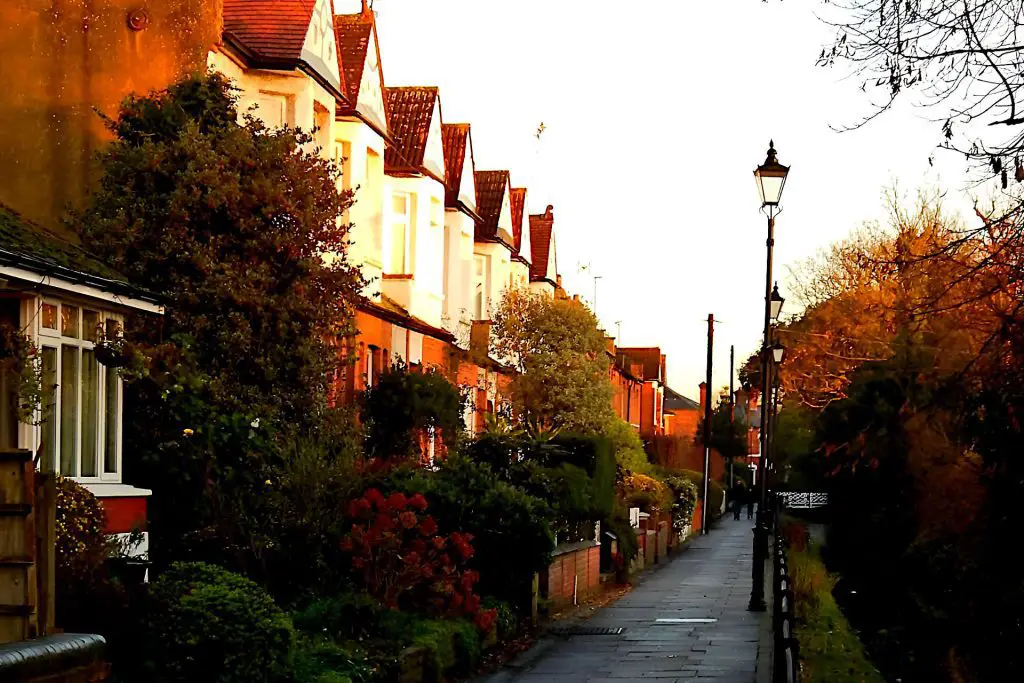
How It Works: The Acoustic Alchemy of Trees
When it comes to noise reduction, trees are nothing short of acoustic marvels. But how exactly do they manage to dampen the cacophony of urban life? The answer lies in their structure and the physics of sound. Sound travels in waves, and when these waves encounter an object, several things can happen: absorption, reflection, and diffusion.
- Absorption: The soft, porous structure of leaves and bark allows trees to absorb sound waves. This is similar to how acoustic foam in a recording studio works. The more foliage a tree has, the greater its capacity to absorb sound.
- Reflection: The hard, dense surfaces of tree trunks reflect sound waves. However, unlike a flat wall that might direct sound waves in a specific direction, the irregular shape of trees disperses these waves, reducing the impact of airborne noise.
- Diffusion: The complex, three-dimensional structure of a tree diffuses sound waves, scattering them in various directions. This breaks up the sound path and further dampens ambient noise.
- Ground Effect: Trees also affect the sound waves that travel close to the ground. The layer of leaves and twigs on the ground can absorb these low-level sounds, contributing to a quieter soundscape.
The effectiveness of trees in reducing noise can also be quantified using acoustic mapping. This involves measuring decibels at various points around a tree or a group of trees to understand how much noise is being mitigated.
Species Matters: Not All Leaves Are Created Equal
While trees, in general, are excellent at reducing noise, not all trees are created equal in this regard. Different species have different noise reduction capabilities, and this is largely due to their physical characteristics.
- Leaf Density: Species with denser foliage, like the evergreen Yew or the broad-leaved Magnolia, are generally more effective at absorbing sound.
- Bark Texture: Trees with rougher bark, such as the Scots Pine, can absorb more sound compared to those with smoother bark.
- Height and Width: Taller trees with wider canopies provide better noise barriers. The Oak and the London Plane are excellent examples of such species.
- Seasonal Variations: Deciduous trees lose their leaves in winter, reducing their noise-absorbing capabilities. Evergreens, on the other hand, provide year-round noise reduction.
- Taxonomy and Silviculture: The family and genus to which a tree belongs, as well as how it is cultivated, can also impact its acoustic properties.
Understanding these nuances is crucial for urban forestry and borough councils aiming to maximize the environmental benefits of their green spaces. It’s not just about planting more trees; it’s about planting the right trees.
Trees are clear more than just passive elements in our urban landscapes; they are active contributors to acoustic comfort and public health. Whether it’s the type of leaves, the texture of the bark, or the overall size and shape, each aspect of a tree contributes to its ability to reduce noise. And as we’ll see in the next section, how London boroughs are leveraging this natural capability varies widely, offering a rich field for data-driven insights and policy recommendations.
By appreciating the science behind trees and noise reduction, we can make more informed choices in urban planning and tree planting, turning our cities into sanctuaries of tranquility amidst the urban roar.
Data-Driven Insights: The London Case Study
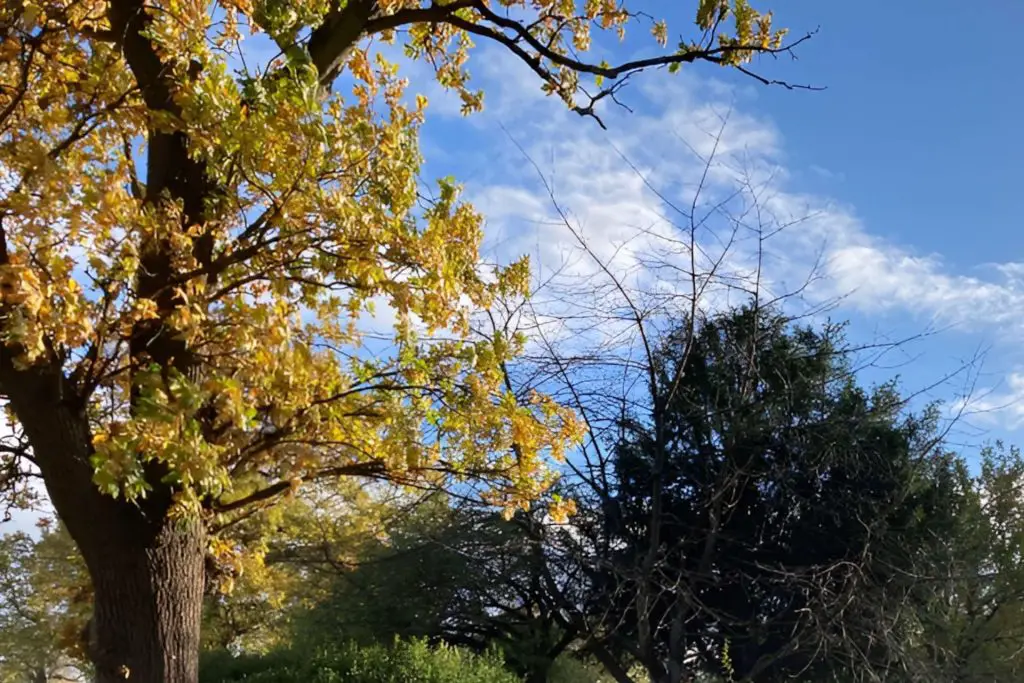
Methodology: The Framework of Our Analysis
Before diving into the findings, let’s briefly discuss the methodology. We analyzed multiple datasets that provided comprehensive information on tree counts, species distribution, and population metrics across London boroughs.2 It should be noted that these datasets were far from perfect with information for some boroughs such as Brent clearly incomplete.
Where full data existed for boroughs the key metrics we focused on were tree density, population-to-tree ratio, and species diversity. These metrics were chosen to provide a holistic view of the role trees play in noise reduction across different boroughs.
Tree Density: More Than Just Numbers
Our analysis revealed significant variations in tree density across London boroughs. For instance, Enfield emerged as the borough with the highest tree density, followed closely by Barnet and Bromley. These boroughs are not just leafy suburbs; they are acoustic fortresses that offer residents a respite from urban noise.
However, tree density alone doesn’t tell the whole story. High-density areas also need to be strategically located near noise-sensitive receptors, such as schools and hospitals, to maximize their environmental benefits. This brings us to our next metric: the population-to-tree ratio.
Population-to-Tree Ratio: A Balancing Act
The population-to-tree ratio offers a different lens through which to view the data. Enfield, despite its high tree density, also has a favorable population-to-tree ratio, making it an exemplar in urban forestry. On the other end of the spectrum, boroughs like Westminster and Camden have less favorable ratios, indicating room for improvement in their green infrastructure.
Interestingly, a lower ratio doesn’t just mean more trees per person; it also implies a potentially quieter environment. A lower ratio can act as a natural noise barrier, reducing road traffic noise and enhancing public health.
Species Diversity: The Spice of Acoustic Life
When it comes to species diversity, the data presented a fascinating landscape. Kingston upon Thames, for example, boasts a wide variety of tree species, ranging from the common London Plane to the exotic Japanese Maple. This diversity is not just aesthetically pleasing; it also has acoustic implications.
Different species have unique noise reduction capabilities. A diverse arboreal population can offer a more comprehensive acoustic comfort zone, absorbing a wider range of sound frequencies. Moreover, species diversity contributes to biodiversity, which has its own set of environmental and public health benefits.
Our data-driven insights paint a complex but promising picture of London’s green acoustic shield. While some boroughs are already leveraging their arboreal assets effectively, others have untapped potential that could transform their soundscape and improve the quality of life for their residents.
As we move forward, these insights can inform borough councils and urban planners, guiding them in creating more harmonious, quieter, and healthier environments. After all, in the battle against noise pollution, every leaf counts.
Standout Boroughs: The Quiet Champions

Enfield: The Oasis of Tranquility
Let’s start with Enfield, a borough that has set a gold standard in urban forestry. With an exceptional population-to-tree ratio, Enfield is not just a leafy haven but a sanctuary of acoustic comfort. The high tree density coupled with a favorable population-to-tree ratio makes it a model for other boroughs to emulate. Residents of Enfield are not just breathing cleaner air; they’re also experiencing lower levels of ambient noise, thanks to this natural noise barrier. It’s a prime example of how green infrastructure can significantly enhance public health and quality of life.
Enfield Leading the Way
| Metric | Enfield | London Average |
|---|---|---|
| Tree Density (Trees per sq mile) | 2400 | 2024 |
| Population to Tree Ratio (No. of people to each tree) | 4.38 | 11.65 |
The table shows that Enfield has a higher tree density and a significantly lower population-to-tree ratio compared to the average values across all London boroughs.
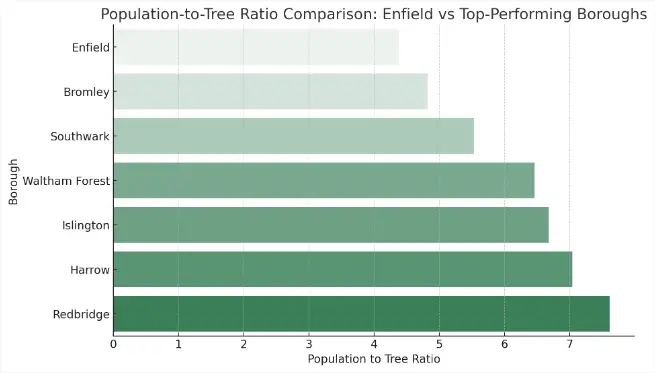
The chart highlights Enfield’s population-to-tree ratio compared to other top-performing boroughs in London
Camden and Westminster: A Symphony of Species
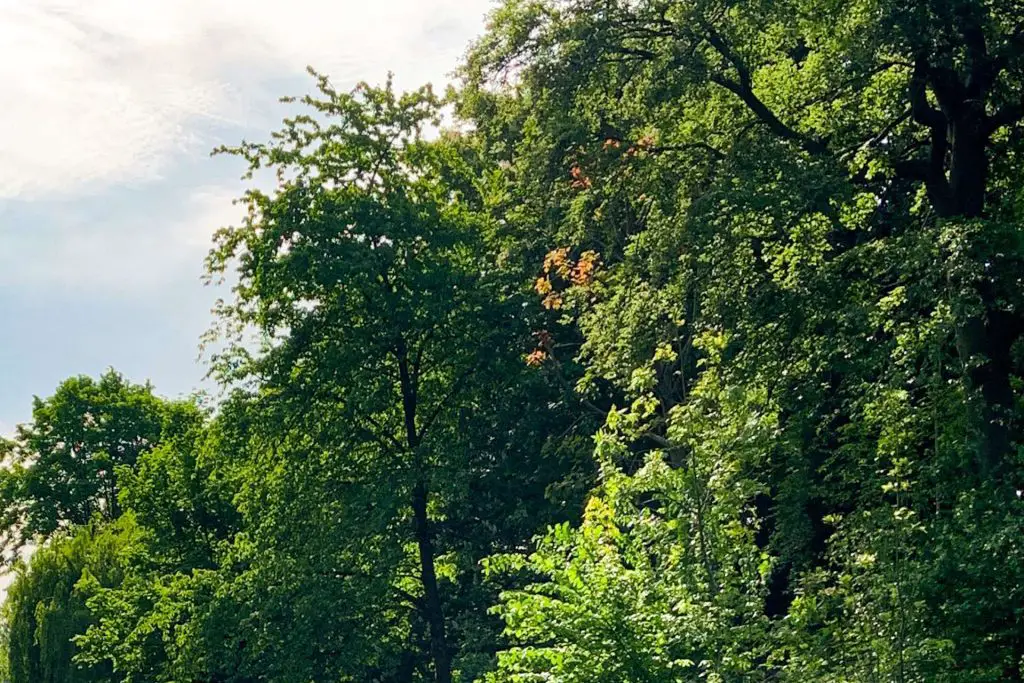
While they may not excel in tree density or population-to-tree ratios, Camden and Westminster stand out for their species diversity. The variety of tree species in these boroughs is akin to a well-orchestrated symphony, each species playing a unique role in the overall soundscape.
From the towering London Plane to the ornamental Cherry Blossom, the diversity is not just a feast for the eyes but also a boon for acoustic mapping. Different species absorb different frequencies of sound, making these boroughs interesting case studies for the relationship between biodiversity and noise reduction.
| Tree Species | Camden | Westminster |
|---|---|---|
| London plane | 3732 | 4607 |
| Common lime | 1374 | 857 |
| Norway maple | 983 | 523 |
| Sycamore maple | 943 | 689 |
| Common ash | 745 | 705 |
| Silver birch | 890 | 893 |
| Cherry | 2504 | 1598 |
| Apple | 646 | 458 |
| Field maple | 422 | 337 |
| Horse chestnut | 383 | 145 |
| Pear | 285 | 1826 |
| Sorbus (Mountain Ash) | 332 | 700 |
| Other | 10942 | 5181 |
This table illustrates the different tree species in the boroughs of Camden and Westminster with the most acoustically effective trees.
Room for Improvement: The Noisy Culprits
While some boroughs are making strides in creating quieter, greener spaces, others have room for improvement. This brings us to our next section: the boroughs that are lagging in key metrics.
Tower Hamlets and Lambeth: The Sound of Silence is Rare
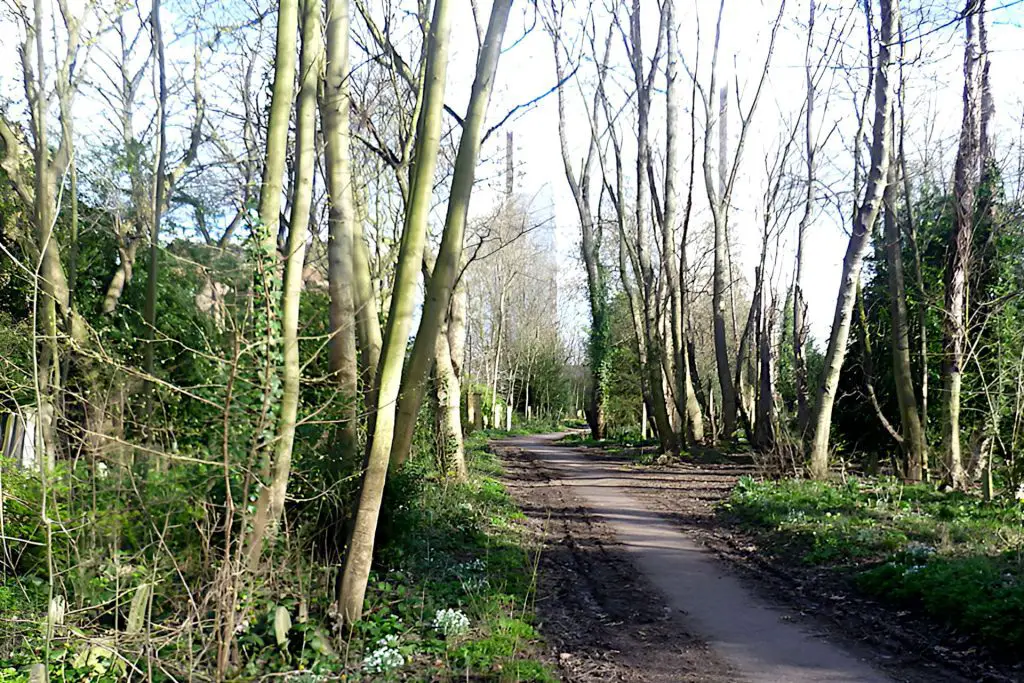
Tower Hamlets and Lambeth have shown low performance in almost all key metrics, from tree density to species diversity. The lack of green infrastructure in these boroughs is not just an aesthetic issue; it’s a pressing public health concern. The absence of adequate noise barriers means that residents are constantly exposed to higher levels of environmental noise, from road traffic noise to other forms of urban noise.
The low tree density and poor species diversity also mean that these boroughs are missing out on the multiple environmental benefits that trees offer, from air pollution reduction to enhancing biodiversity. It’s a wake-up call for borough councils and urban planners to invest in tree planting and urban green spaces.
| Metric | Tower Hamlets | Lambeth | London Average |
|---|---|---|---|
| Tree Density (Trees per sq mile) | 1858 | 1049 | 2024 |
| Population-to-Tree Ratio | 22.91 | 24.9 | 11.65 |
While boroughs like Enfield are leading the way in leveraging the power of trees for noise reduction, others like Tower Hamlets and Lambeth have some way to go. The contrast between these boroughs serves as a compelling narrative of what can be achieved with thoughtful urban planning and investment in green infrastructure.
The data doesn’t lie; trees are indeed the silent heroes of London, fighting the relentless roar of urban life one leaf at a time. And as we’ve seen, it’s not just about having trees; it’s about having the right kind of trees, in the right places, for the right reasons.
Thought-Provoking Questions
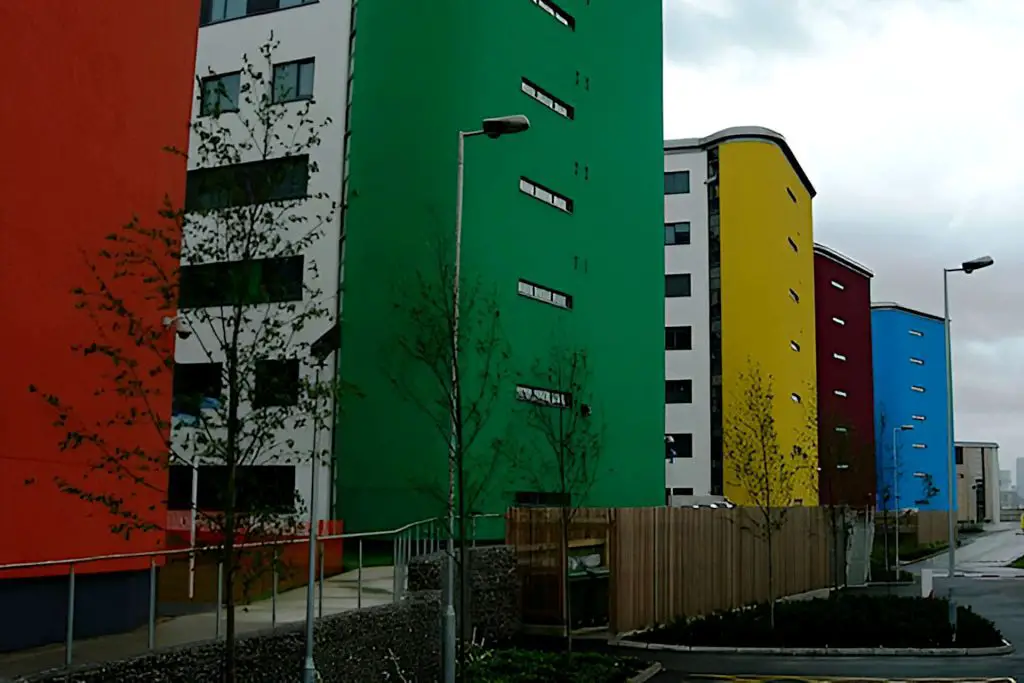
Future Planning: Could Specific Tree Species Improve Noise Reduction in Underperforming Boroughs?
As we’ve seen, not all trees are created equal when it comes to noise reduction. Species with denser foliage and broader leaves tend to be more effective at absorbing sound. So, one has to wonder: could strategically planting specific species significantly improve noise reduction in boroughs that are currently underperforming?
Take Tower Hamlets and Lambeth, for example. These boroughs have lower tree density and species diversity, which could be contributing to higher levels of noise pollution. What if these boroughs adopted an urban forestry plan that prioritized planting species known for their sound-absorbing qualities? The potential for a quieter, more tranquil environment is compelling and warrants further investigation.
Seasonal Impact: How Do Seasonal Changes Affect Noise Reduction?
Seasonal changes bring about a transformation in our urban green spaces. Deciduous trees lose their leaves in the fall, potentially reducing their noise-absorbing capabilities until new leaves sprout in the spring. On the other hand, evergreen species provide year-round acoustic comfort.
So, how do these seasonal shifts impact ambient noise levels across London boroughs? Could the seasonal shedding of leaves be contributing to increased noise exposure during certain months? These questions open up avenues for further acoustic mapping and noise surveys to understand the seasonal dynamics of urban noise.
Socio-Economic Implications: Could Tree Density and Diversity Impact Property Values or Community Well-Being?
The benefits of trees extend beyond noise reduction and air pollution control. Numerous studies have shown that green infrastructure positively impacts property values. A street lined with mature, diverse trees is not just a quiet street; it’s also a more valuable one.
Moreover, the health and well-being benefits of living near trees are well-documented. Reduced noise nuisance and lower air pollution levels contribute to better mental and physical health. Therefore, could an increase in tree density and species diversity lead to a rise in property values and an overall improvement in community well-being?
While we have made strides in understanding the role of trees in noise abatement, many questions remain. These thought-provoking inquiries not only deepen our understanding but also guide future urban planning and public policy decisions. They challenge us to think critically about how we can optimize our urban forests for multiple benefits, including but not limited to noise reduction.
Key Findings and Implications for Noise Reduction in London
In this comprehensive exploration, we’ve delved into the often-overlooked role of trees in mitigating urban noise. Our data-driven insights revealed significant disparities across London boroughs in terms of tree density, population-to-tree ratio, and species diversity. Boroughs like Enfield stand out for their exceptional population-to-tree ratios, while Camden and Westminster shine in species diversity. On the flip side, Tower Hamlets and Newham lag behind, offering opportunities for improvement.
These findings have far-reaching implications. They not only contribute to the discourse on noise pollution policy but also offer actionable insights for borough councils and urban planners. The data suggests that strategic tree planting could be a game-changer in creating quieter, more tranquil environments.
Cherish Your Local Greenery and Support Urban Tree-Planting Initiatives
As we navigate the hustle and bustle of city life, let’s not forget the silent heroes standing tall amidst the concrete and steel—our trees. They do more than just beautify our surroundings; they improve our quality of life in measurable ways, from reducing noise exposure to enhancing public health.
Final Thoughts
So, the next time you find yourself walking down a leafy suburb or spending time in a park, take a moment to appreciate the trees around you. Better yet, get involved in local urban forestry initiatives. Whether it’s participating in community tree-planting events or advocating for green infrastructure in public spaces, every effort counts.
In a world increasingly plagued by environmental noise and air pollution, trees offer a natural, sustainable solution. Let’s give them the attention and care they deserve. Together, we can make London a quieter, greener, and more sustainable city.
References
- World Health Organization: “Guidelines for Community Noise.“
- Data.gov.uk: “Local Authority Maintained Trees“
Notes
The boroughs of Brent, Croydon, Havering, Hackney, and Wandsworth have been dropped from the figures as the figures for these boroughs are substantially incomplete.
